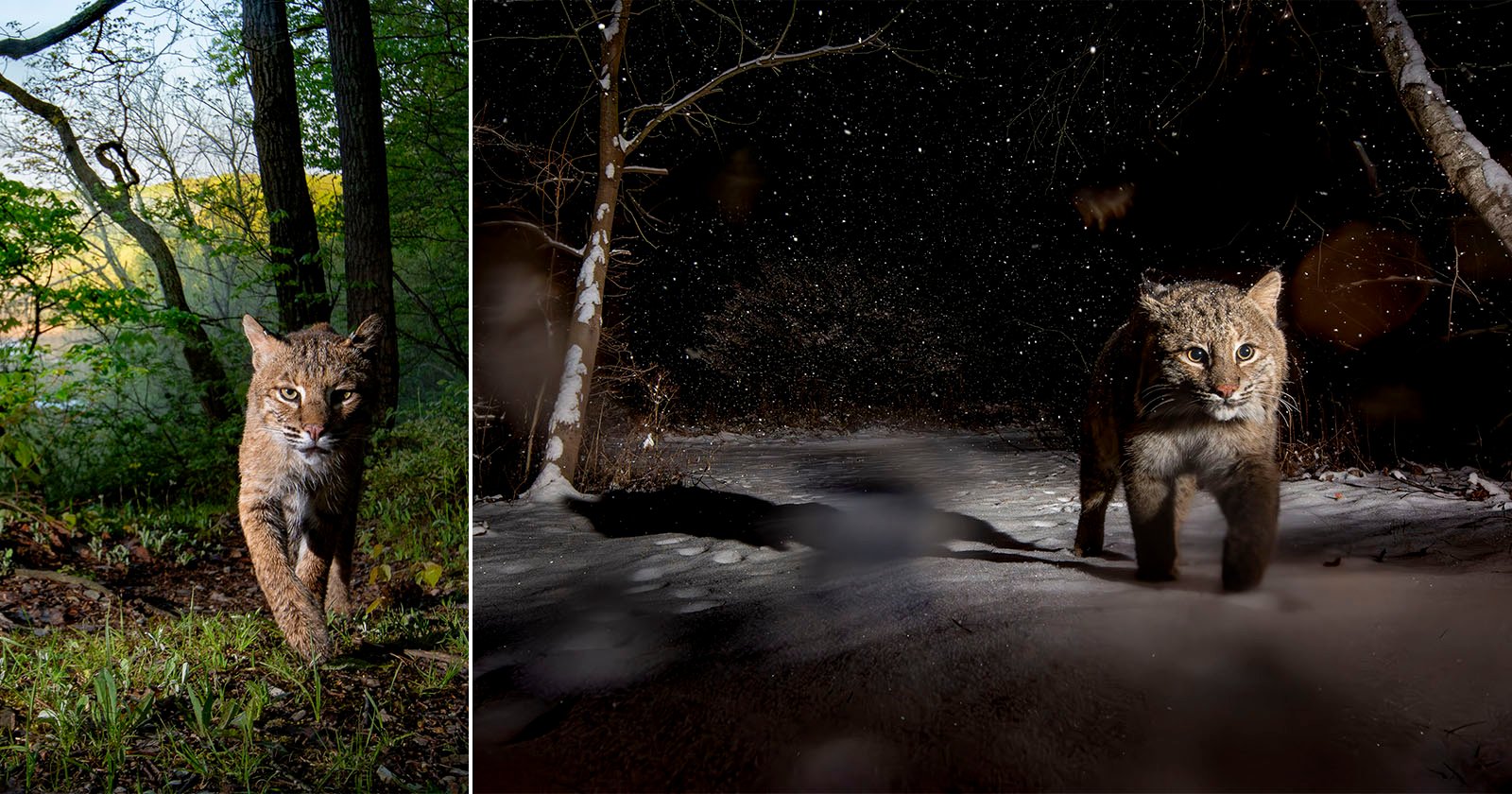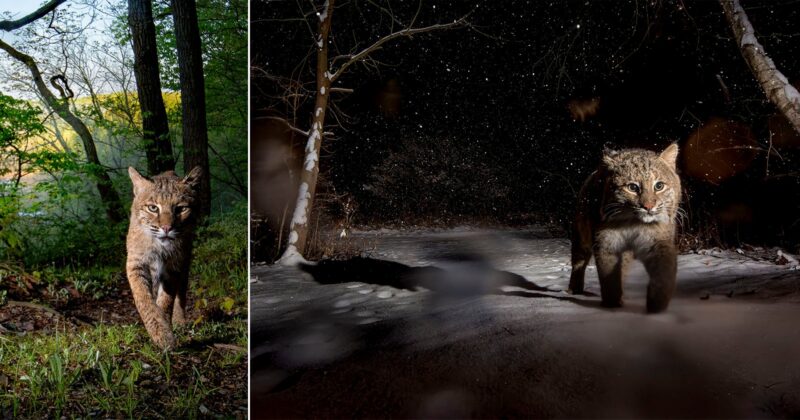
If you’re looking for adjectives for bobcats, there’s stealthy or very stealthy. However, that doesn’t stop award-winning wildlife photographer Steve Winter from capturing incredible photos of the elusive wildcats.
Capturing sharp, high-resolution photos of bobcats in the wild is both difficult and tantalizing because these animals are elusive, typically avoid humans, blend into their surroundings, and they’re fast and agile.
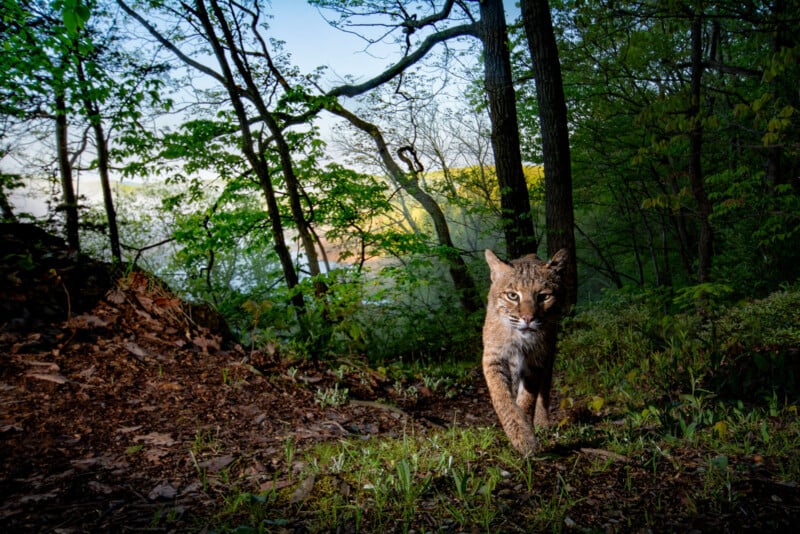 Copyright Steve Winter, courtesy of The Nature Conservancy
Copyright Steve Winter, courtesy of The Nature Conservancy
Award-winning nature photographer Steve Winter used wireless photo traps to document bobcats in New Jersey, including at nighttime and in snowy conditions. His well-lit photo of a bobcat kitten is on the cover of Nature Conservancy Magazine (2025 / Issue 3).
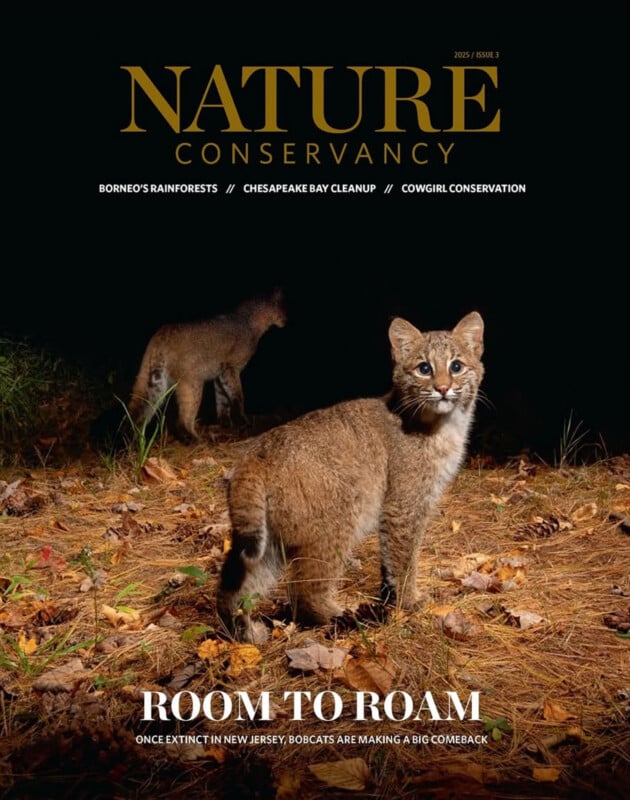 A bobcat kitten and mother near The Nature Conservancy’s Johnsonburg Swamp Preserve in New Jersey (Copyright Steve Winter/courtesy The Nature Conservancy) Bobcats in the Wild
A bobcat kitten and mother near The Nature Conservancy’s Johnsonburg Swamp Preserve in New Jersey (Copyright Steve Winter/courtesy The Nature Conservancy) Bobcats in the Wild
“50 years ago,” said Nature Conservancy magazine, “bobcats vanished from the State of New Jersey. Wildlife scientists reintroduced them, but to survive a changing climate and increasing urbanization, these felines will need more room to roam.”
The cover story was written by environmental journalist Sharon Guynup, spouse of photographer Winter.
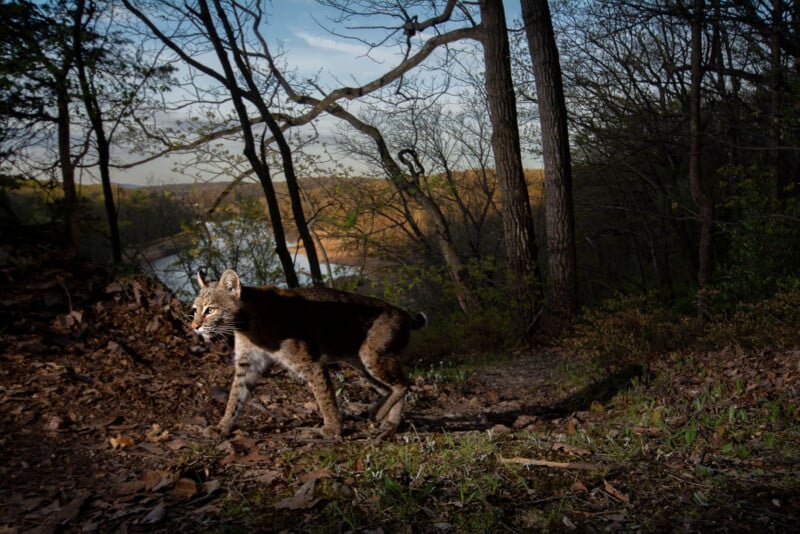 A bobcat crosses through a forest in northwestern New Jersey (copyright Steve Winter/courtesy The Nature Conservancy) Credentials
A bobcat crosses through a forest in northwestern New Jersey (copyright Steve Winter/courtesy The Nature Conservancy) Credentials
Born in Indiana, photojournalist Winter started at the Black Star agency and migrated to nature photography.
For more than three decades, Winter has been a contributing photographer for National Geographic Magazine. Specializing in photography of big cats, Winter is widely quoted and honored for his nature work. He was named BBC Wildlife Photographer of the Year and BBC Wildlife Photojournalist of the Year and received top nature story honors from World Press Photo. Winter is two-time winner of Picture of the Year International’s Global Vision Award.
In 2022, he founded Big Cat Voices to advocate for large felines.
“My contribution,” Winter says, “is through storytelling: photos, magazine articles, and documentary films.”
He hopes his work inspires his audience to help protect big cats.
Photographing Bobcats in New Jersey
Winter photographed bobcats in the wild at The Nature Conservancy’s Johnsonburg Swamp Preserve in New Jersey, some 60 miles northwest of New York City.
“The preserve (700+ acres) is a habitat stronghold within Bobcat Alley, a vital corridor of protected land that The Nature Conservancy and partners are working to create in northwestern New Jersey,” says the conservation group. “Iconic mammals like black bears, red foxes, and state-endangered bobcats can thrive in this greenway, which connects critical migratory habitat between and along ridges of the Kittatinny and Highlands mountains, subranges of North America’s Appalachian Mountains.”
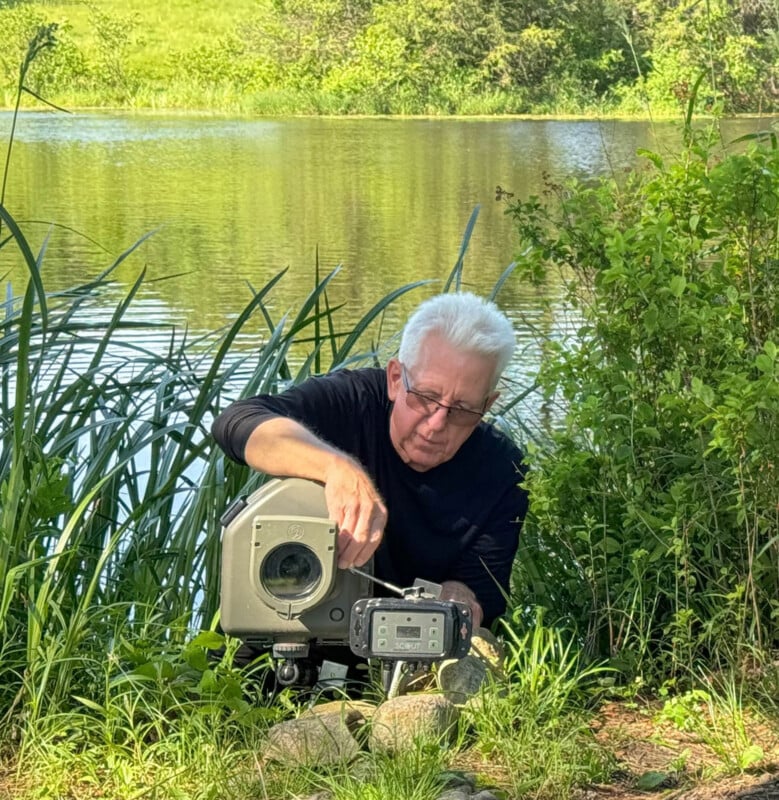 Steve Winter sets up camera in northern New Jersey, documenting bobcats for The Nature Conservancy
Steve Winter sets up camera in northern New Jersey, documenting bobcats for The Nature Conservancy
In narrow pathways, Winter set up camera traps, using an ultra-wide 10-24mm lens and weatherproof housings for the cameras and flash units. Five-frame shots were triggered when bobcats crossed a beam; aperture was keyed by the flash.
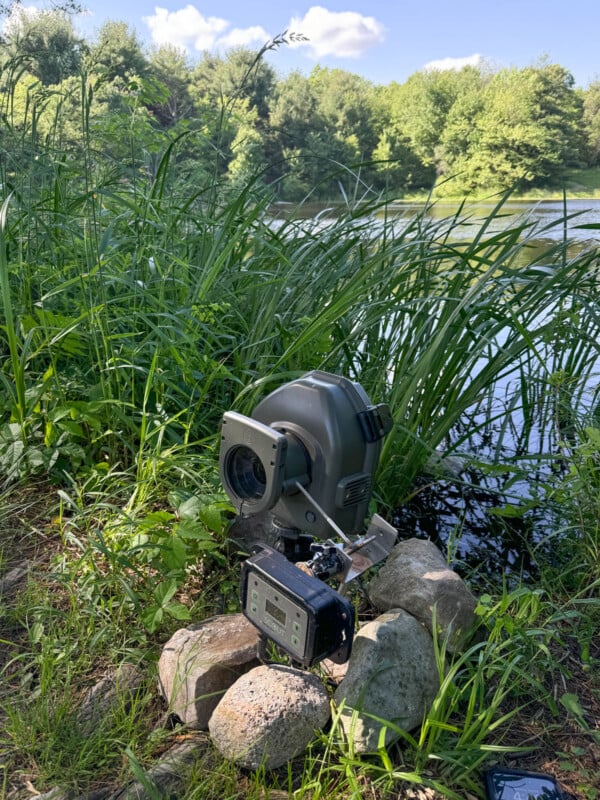 Steve Winter’s camera installation in northern New Jersey, supported by rocks
Steve Winter’s camera installation in northern New Jersey, supported by rocks
How long did the project take? “Longer than I thought,” said Winter, describing bobcats as “a bit skittish.”
Weather was not a factor except for rain which curtails bobcats’ movements. The camera flash would cause some bobcats to stop for a flash or two, and then the cats kept moving, Winter said. Curious sub-adult bobcats might stop and check out the camera box by smelling it.
With decades of experience and global awards, Winter is still confounded when his wireless equipment doesn’t work.
“Voodoo, I call it voodoo,” he says.
Conservationists and New Jersey wildlife officials applaud Winter’s bobcat photos, documenting the species’ recovery and its beauty in the wild.
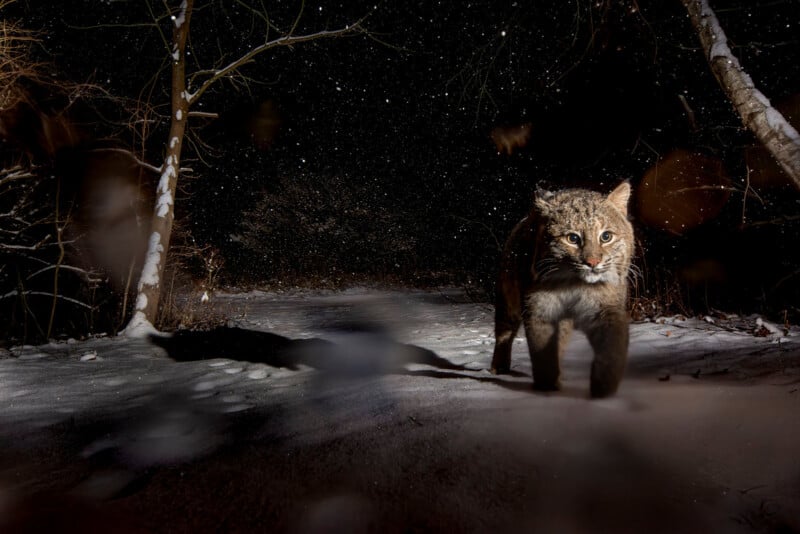 Bobcat in the snow (copyright Steve Winter/courtesy The Nature Conservancy) Bobcats As a Cultural Symbol
Bobcat in the snow (copyright Steve Winter/courtesy The Nature Conservancy) Bobcats As a Cultural Symbol
The bobcat is a Native American cultural symbol for persistence, independence, and clear vision. Bobcats also can represent greed and selfishness.
In sports, the bobcat is a mascot at Texas State University and Ohio University. At The Nature Conservancy, the senior photo editor (Alex Snyder) is a double-degree graduate of Ohio University’s School of Visual Communication.
“I jumped at the chance to work on a story about bobcats,” says Snyder.
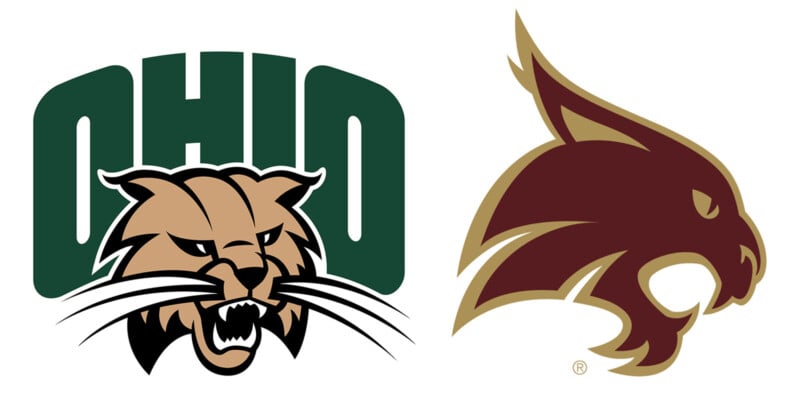
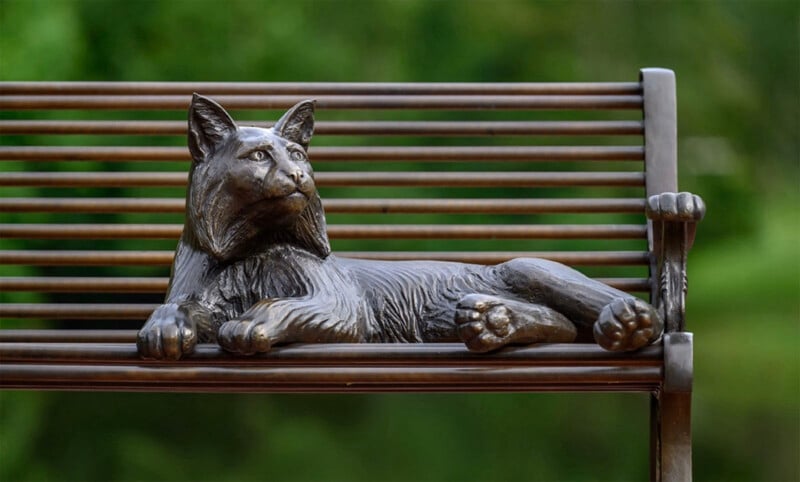 Bobcat statue at Ohio University (photo courtesy of Ohio University) The Allure of Bobcats for Photographers
Bobcat statue at Ohio University (photo courtesy of Ohio University) The Allure of Bobcats for Photographers
At times, the elusive bobcat appears in trail-cam shots. On August 15, Field & Stream published a list of “60 Craziest Trail Camera Photos We’ve Ever Seen,” which included a couple of images of bobcats and deer.
But in-focus camera shots are rarer. Wildlife photographer Randy Robbins wrote on PetaPixel in 2021 that “it’s usually a fleeting glimpse, as they see you about the same time you see them and then they disappear into the woods.”
Robbins, based in California, shared the story of his three-year quest to photograph a bobcat, finally capturing this image with an infrared-triggered camera trap.
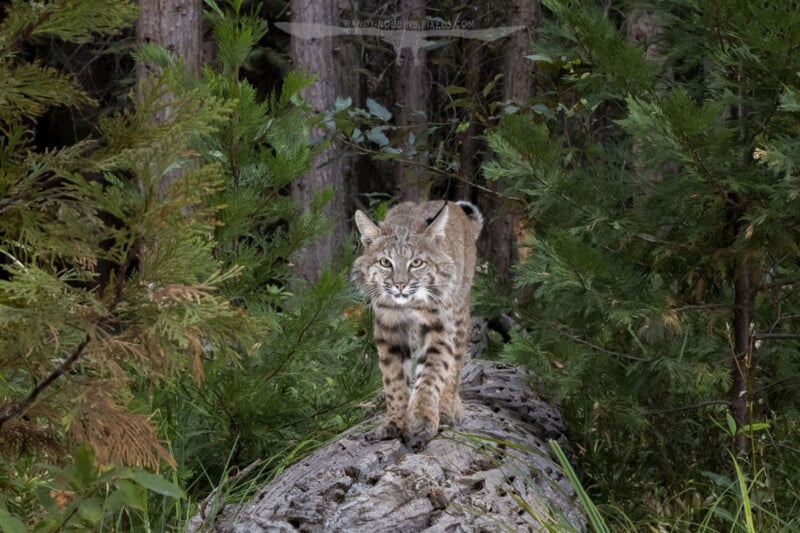 Bobcat photo by Randy Robbins (2021)
Bobcat photo by Randy Robbins (2021)
Wildlife conservation photographer and filmmaker Sarah Killingsworth, based in Marin County, California, is impressed by the adaptability of bobcats.
“Bobcats live throughout the Bay Area,” she told Bay Nature in 2021, “and the march of development into their habitat has forced them to adapt to an increasingly urban life. Bobcats are without question my favorite species to watch and photograph. That passion has led me to observe the same bobcats over years, including a truly special mother who has raised multiple litters of kittens in a suburban environment.”
How did Killingsworth take this suburban photo?
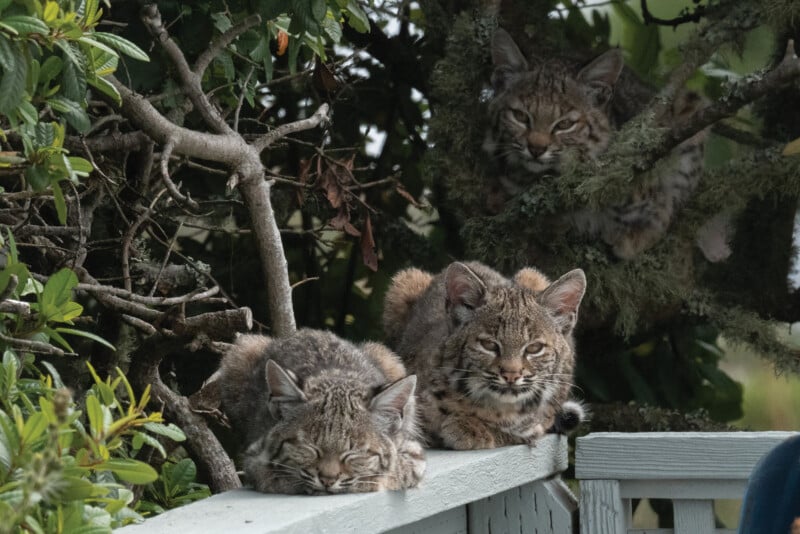 Bobcat kittens on a fence and tree limb, waiting while the mother bobcat hunts for food. (Photo: copyright Sarah Killingsworth)
Bobcat kittens on a fence and tree limb, waiting while the mother bobcat hunts for food. (Photo: copyright Sarah Killingsworth)
“With a long lens from across the street,” she says. These kittens were born in a backyard nearby.
Perhaps another adjective — in addition to stealthy — also applies to bobcats: patient.
About the author: Ken Klein lives in Silver Spring, Maryland; he is retired after a career in politics, lobbying, and media including The Associated Press and Gannett in Florida. Klein is an alumnus of Ohio University and a member of the Dean’s Advisory Council of the Scripps College of Communication. Professionally, he has worked for Fort Myers News-Press (Gannett), The Associated Press (Tallahassee), Senator Bob Graham, and the Outdoor Advertising Association of America (OAAA).
